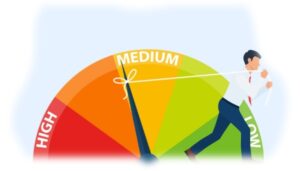
Risk-sharing is an urgent and significant topic of discussion for higher education institutions across the United States. With new legislation on the horizon, the potential financial impact on schools could be profound, sparking concerns among educators and administrators. One bill in particular, H.R. 7831, the Preventing Financial Exploitation in Higher Education Act, underscores the pressing need for clear definitions and careful consideration to avert negative consequences for schools and students. The bill inserts language into Part D of Title IV of the Higher Education Act of 1965, Section 454A for Institutional Accountability for Defaulted, Delinquent, and Underpaid Student Loans.
The Financial Implications of Risk-Sharing
 If enacted without precise definitions and safeguards, the proposed risk-sharing bill could impose substantial financial burdens on higher education institutions.
If enacted without precise definitions and safeguards, the proposed risk-sharing bill could impose substantial financial burdens on higher education institutions.
These costs might exceed the funds received through student loans, pushing schools into a precarious financial position. This situation poses a significant risk to the accessibility and affordability of education for many students, especially those from high-risk and minority backgrounds.
Misconceptions About Loan Forgiveness
The “on-ramp” program has fostered a misleading sense of security among educational institutions and borrowers. This program suggests that defaults will not be a concern once it concludes on September 30, 2024. However, the reality is starkly different. Many borrowers remain delinquent and are teetering on the edge of default while they wait for loan forgiveness.
Most loan forgiveness programs are designed to benefit low-income borrowers or those repaying their loans for a long duration, typically between 10 to 25 years. Consequently, these programs offer little immediate relief to those impacted by the proposed legislation.
Understanding the Highest Risks
Section 454A of the legislation highlights the most significant risks for universities, primarily focusing on defaulted, delinquent, and underpaid student loans. Several factors contribute to these risks:
 Inflation: The rising cost of living makes it increasingly difficult for borrowers to manage their loan payments.
Inflation: The rising cost of living makes it increasingly difficult for borrowers to manage their loan payments.- Loan Forgiveness Movements: Ongoing efforts to forgive loans introduce uncertainty regarding repayment expectations.
- Income-Driven Repayment (IDR) Plans: While beneficial in theory, these plans can sometimes result in the perception that the loan is being underpaid.
In addition to these factors, challenges with federal loan servicers exacerbate the situation. Issues such as rejected payments, the necessity to reset automated payments, and insufficient personnel to process payments and manage deferments and forbearances contribute to a rise in loan delinquencies and defaults. These compounded problems create a precarious financial environment for borrowers and educational institutions.
The Slippery Slope of Restricted Access
Champion, an advocate for equitable education, warns that the bill could set a dangerous precedent. The financial burdens risk-sharing imposes could compel schools to deny enrollment to higher-risk students. This outcome would limit access to education and undermine the fundamental goals of the Higher Education Act of 1965.
You can read more in Champion’s H.R. 7831 SUMMARY: Preventing Financial Exploitation in Higher Education Act.
Upholding the Higher Education Act of 1965
The Higher Education Act of 1965, a landmark legislation born out of the Civil Rights movement, was designed to extend educational opportunities to high-risk and minority populations. It is crucial to uphold the principles of this act and ensure that all students, regardless of their background, have access to higher education.
Implementing risk-sharing measures without careful consideration could reverse decades of progress in educational equity. This is a call to action to protect the principles of The Higher Education Act of 1965.
 Take Action: Contact Your Representatives
Take Action: Contact Your Representatives
Your voice is crucial in this critical discussion. Champion urges you to write to your Congressional representatives and Senators in Washington, D.C., to express your concerns about the proposed risk-sharing bill. It is currently under review by the U.S. House Education and the Workforce Committee and the Ways and Means Committee. Your input can play a pivotal role in shaping the future of higher education and ensuring that it remains accessible to all students.
As risk-sharing becomes a reality for higher education institutions, it is vital to scrutinize and address the potential repercussions. With careful consideration, such legislation could ensure educational access and equity. By upholding the principles of the Higher Education Act of 1965, we can continue providing opportunities for all students, ensuring a brighter future for future generations.
Remember, your engagement is crucial in this process. Reach out to your representatives today and make your voice heard in the ongoing debate over risk-sharing in higher education.
Copyright 2024 Champion Empowerment Institute